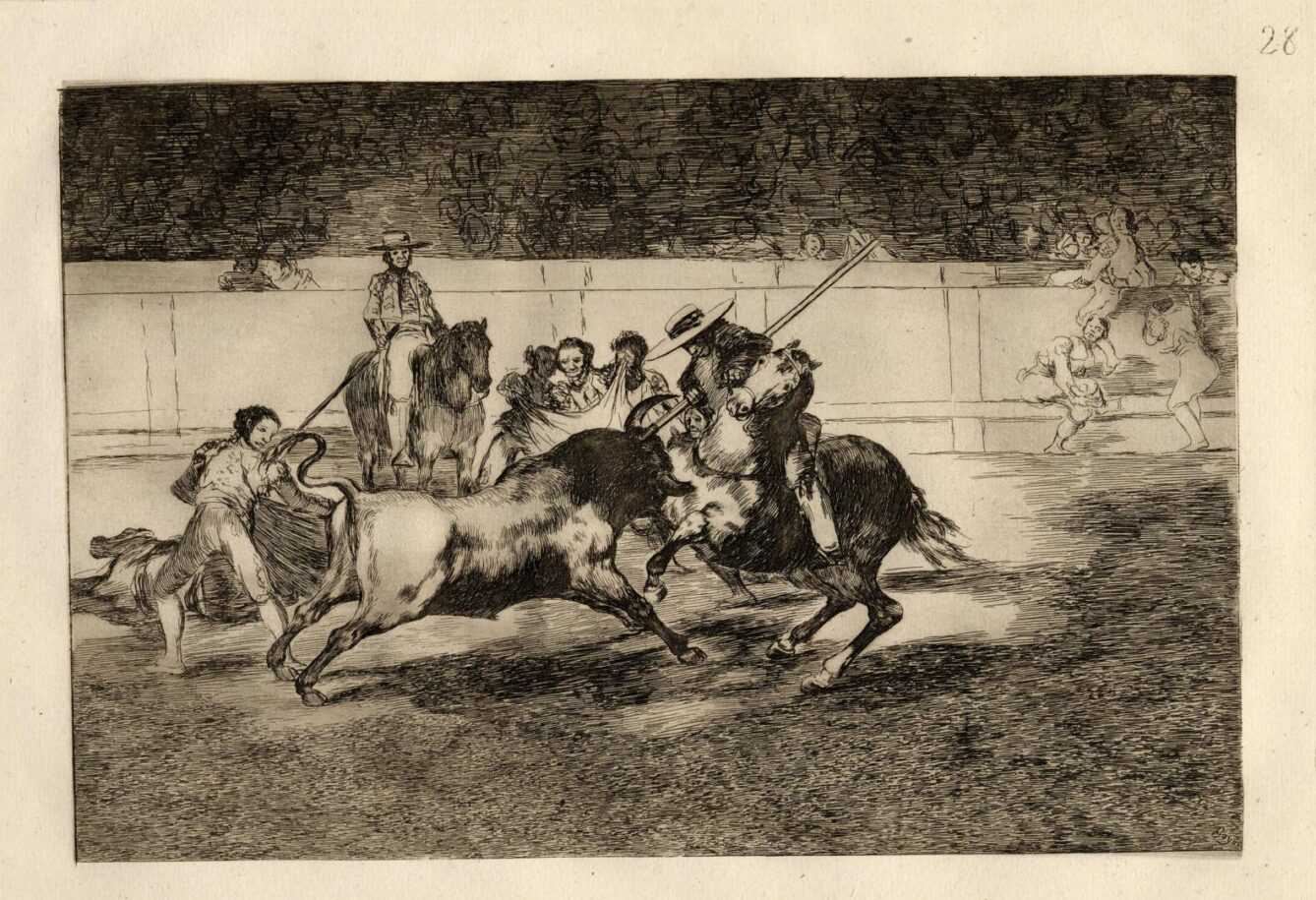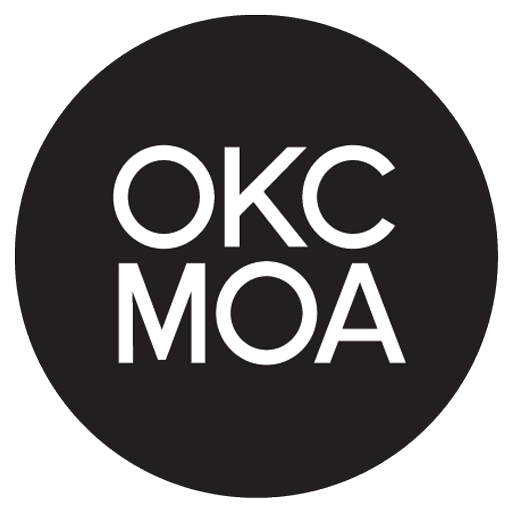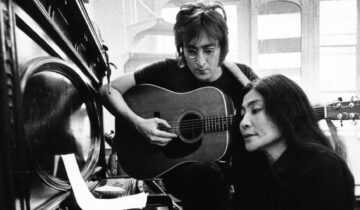PICASSO AND THE BULLFIGHT: PIQUE II
As a Spaniard, Picasso avidly attended the corrida, or bullfight. His love of the Spanish tradition comes across in the nineteen linocuts depicting this theme—including Pique II [Pike II]—created in a torrent of activity over four months beginning in July 1959. Picasso’s fascination with this subject was lifelong, and he often referred to himself as a bull in paintings, drawings, and prints. He was particularly captivated by the dynamic forms of the toreros (bullfighters), banderilleros (a matador’s assistant), picadors (bullfighters on horseback with a lance), matadors, horses, bulls, and the bullring. This interest extended to the Greek mythological figure of the Minotaur (half bull, half man), which Picasso also portrayed himself as in many works to emphasize his sexual and artistic prowess.
Pique refers to the lance or pike pole that a bullfighter uses to goad the bull. Through this image, Picasso refers not only to his earlier bullfight poster of 1954, Toros en Vallauris [Bulls in Vallauris], but also to the prints of one of the artists he most revered, Francisco de Goya (1746-1828). The composition of a rearing horse and its rider lancing a bull specifically echoes Plate 28 of Goya’s print series La Tauromaquia [Bullfighting] (1816).
Francisco de Goya, El esforzado Rendon picando un toro, de cuya suerte murio en la plaza de Madrid [The forceful Rendon stabs a bull with the pique, from which pass he died in the ring at Madrid] from the series La Tauromaquia [Bullfighting], 1816, plate 28, etching. © The Trustees of the British Museum
—————————————————————————————————————————————————————————-
PICASSO Y LA CORRIDA DE TOROS: PICA II
Como español, Picasso asistía con avidez a la corrida de toros. Su amor por la tradición española se refleja en los diecinueve linograbados que representan este tema, incluido Pique II [Pica II], creados en un torrente de actividad durante cuatro meses a partir en julio de 1959. La fascinación de Picasso por este tema fue de por vida, y a menudo se refería a sí mismo como un toro en pinturas, dibujos y grabados. Estaba particularmente cautivado por las formas dinámicas de los toreros, banderilleros, picadores, matadores, caballos, toros y la plaza de toros. Este interés se extendía a la figura mitológica griega del Minotauro (mitad toro, mitad hombre), que Picasso también retrataba a sí mismo en muchas obras para enfatizar su destreza sexual y artística.
Pique se refiere a la lanza o pica que utiliza un torero para incitar al toro. A través de esta imagen, Picasso se refiere no sólo a su anterior cartel de corrida de toros de 1954, Toros en Vallauris, sino también a las estampas de uno de los artistas a los que más admiraba, Francisco de Goya (1746-1828). La composición de un caballo encabritado y su jinete lanzando un toro hace eco específicamente de la lámina 28 de la serie de grabados de Goya La Tauromaquia (1816).
Francisco de Goya, El esforzado Rendón picando un toro, de cuya suerte murió en la plaza de Madrid de la serie La Tauromaquia, 1816, lámina 28, grabado. © The Trustees of the British Museum




